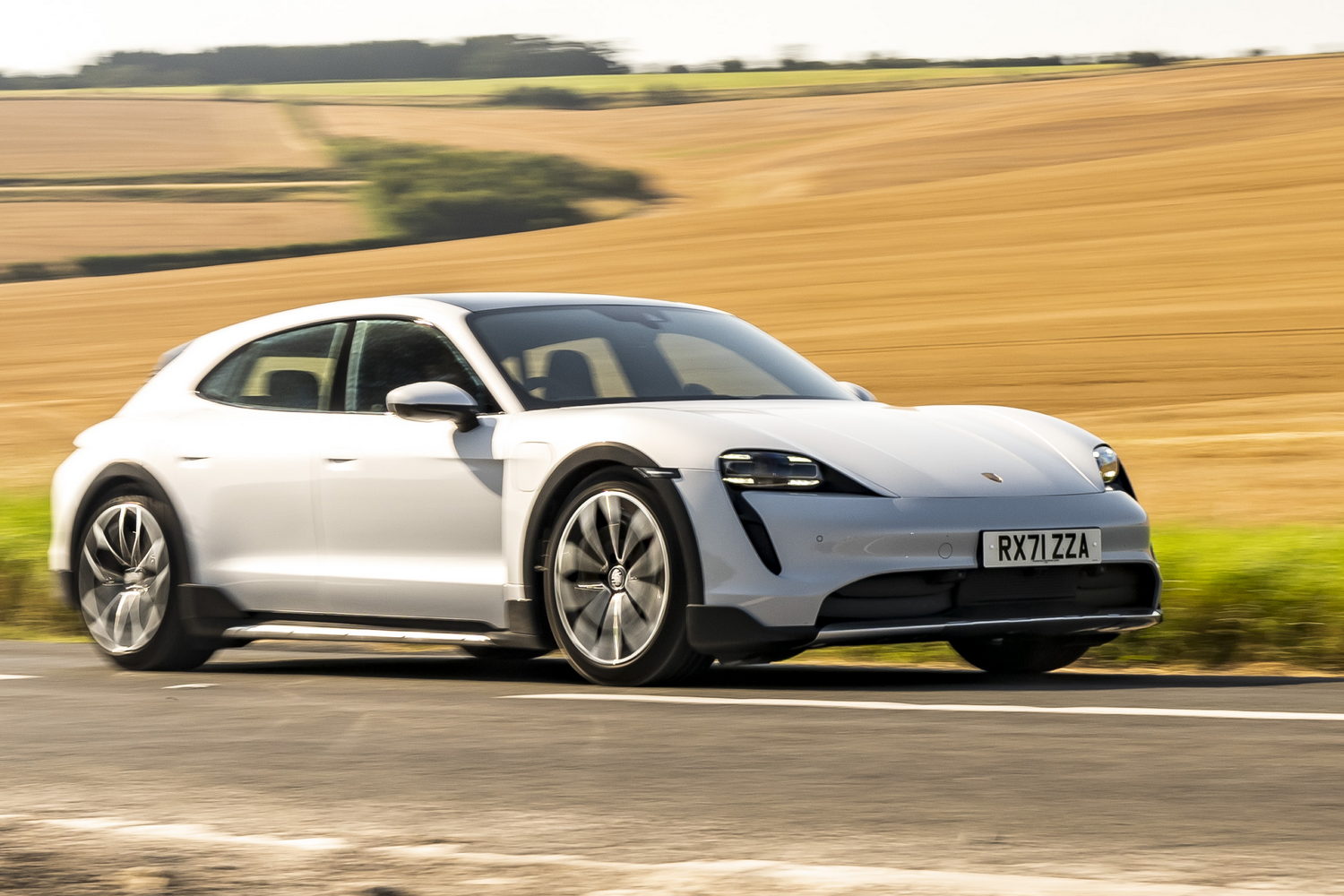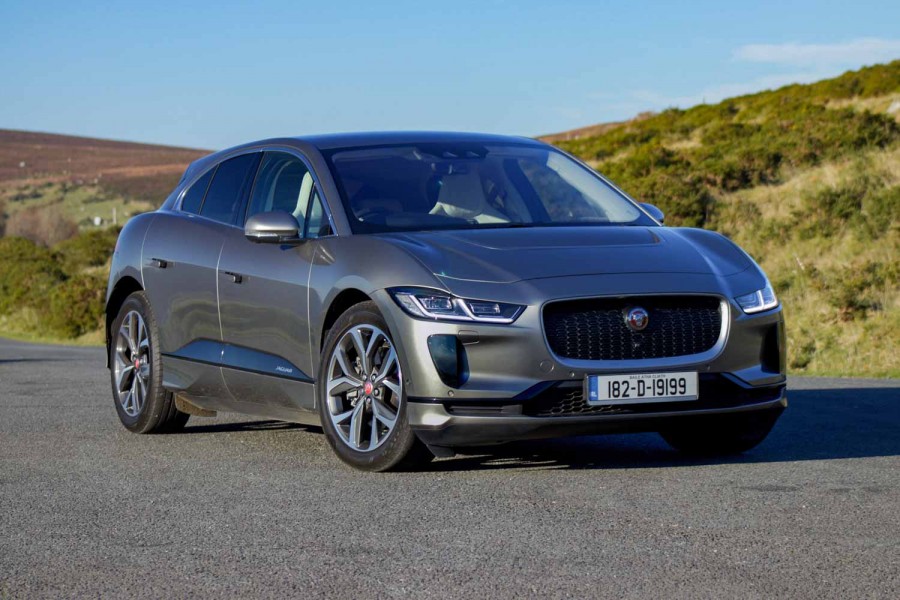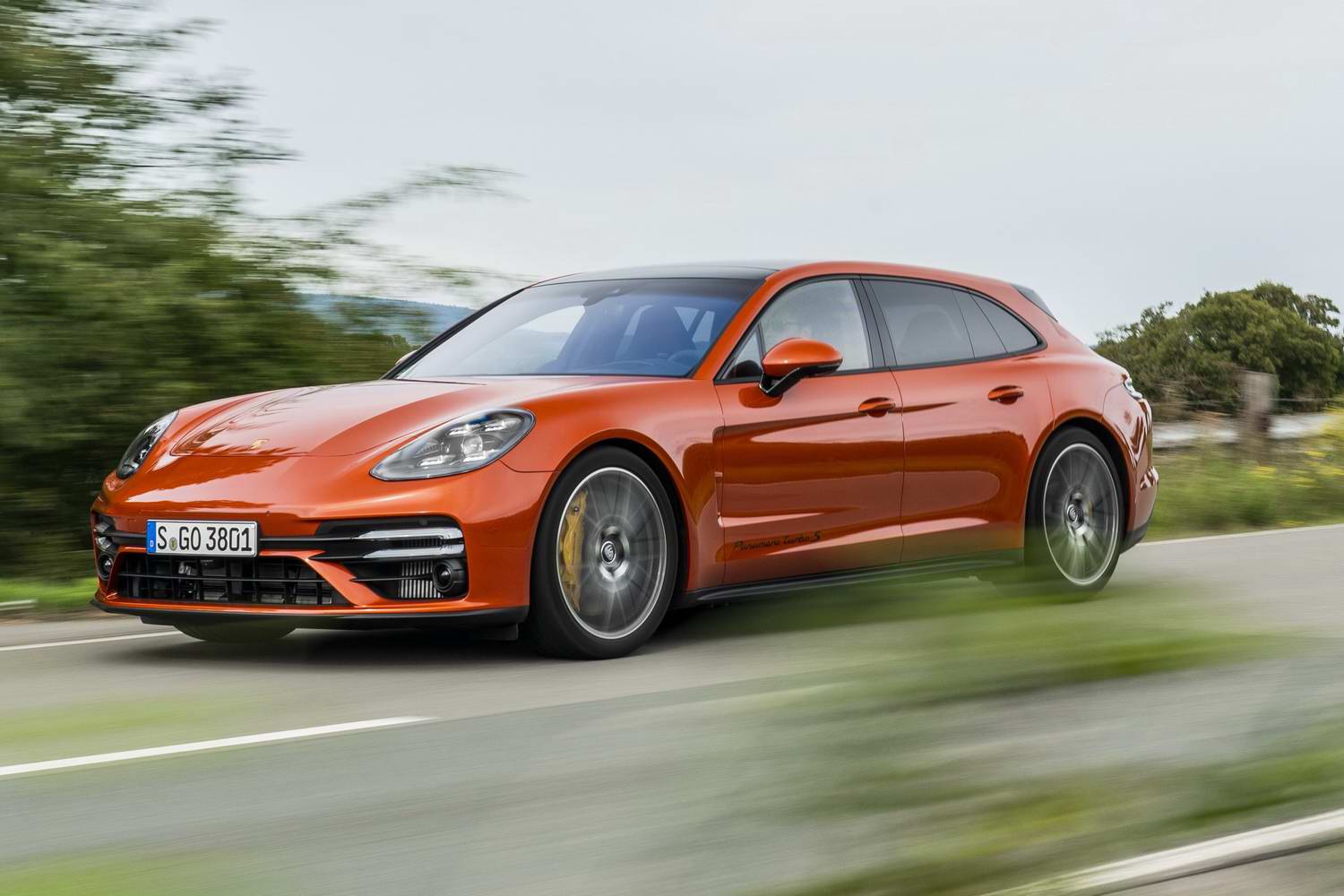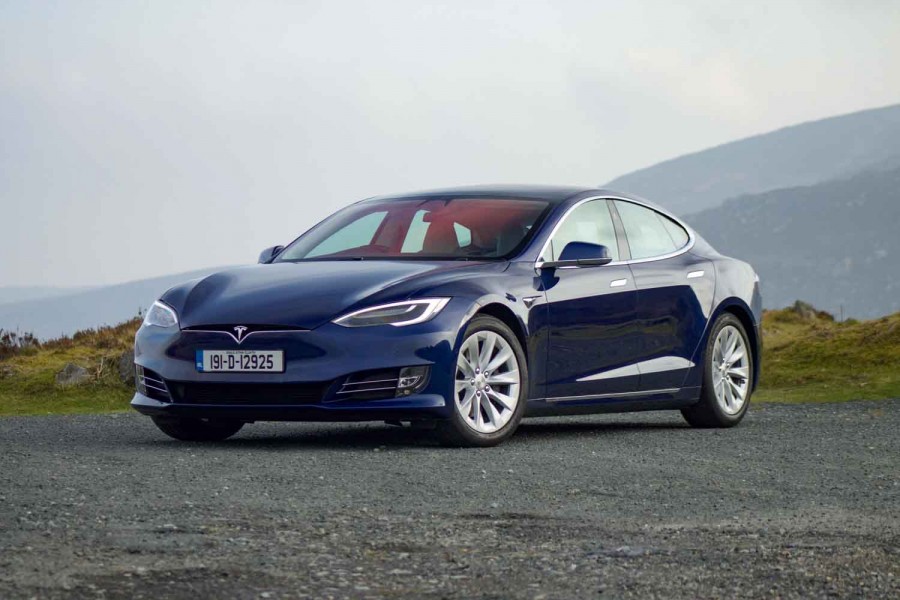The Porsche Taycan has become the yardstick by which all other luxury electric cars are measured. Its combination of range, performance and handling is unparalleled, yet it's also practical and luxurious. And now there's a line-up of three different body styles to choose from: the standard sports saloon, the Sport Turismo estate and the Cross Turismo estate. It's the jacked-up, off-road-inspired Cross Turismo we're driving here, in 4S guise, which on paper appears to be the one to have. Does it work out that way on and off road?
In the metal
With the lower, sportier Sport Turismo now available, the Cross Turismo is no longer the pretty face in the Taycan range, but nor is it an ugly duckling. Sitting 2cm higher than the saloon, the Cross Turismo should, by rights, look a bit awkward, but the clever use of chunky body cladding has kept things looking smart. Roof rails and skid plates give it a rugged sportiness that perfectly suits a car that's trying to be both a Porsche and an off-roader.
Inside, though, it's pretty much identical to every other Taycan model, with three screens that dominate the cabin. There's a digital instrument cluster that's configurable, giving you all the information you need as and when you need it. Then, in the centre of the dash is a conventional touchscreen infotainment system with Porsche's latest software. It's modern looking, and easy to use on the move, plus it's aided by the lower touchscreen on the centre console.
That provides shortcuts to various parts of the infotainment system - navigation, media and phone - as well as the climate control. It has a strange haptic feedback arrangement that doesn't feel especially natural, but it works as well as can be expected for a touchscreen. We'd prefer physical buttons, which would be less distracting on the move, but the screen is far from the worst we've used.
As with every other version of the Taycan, the Cross Turismo comes with Porsche's impeccable build quality as standard. Every panel fits perfectly alongside its neighbours, and every part feels solid and robust. It's exceptional, and the materials used are first rate too.
Naturally, one of the key advantages of the Sport Turismo and Cross Turismo models over their saloon stablemates is the additional practicality, but there's nothing to split the two estates in terms of luggage or passenger space. Both come with an 84-litre 'frunk' under the bonnet, and both come with a 446-litre rear load bay, which can be expanded by folding down the rear seats.
Leave the seats up, however, and the Taycan leaves you with plenty of cabin space for four adults. Legroom is generous and headroom is ample, unlike in the saloon, which is hampered by its lower roofline.
Speaking of the roof, both cars can also be specified with roof rails, which allow customers to fit ski boxes or bike racks, although a word of warning is required to make sure the roof load doesn't foul the tailgate. The automatic tailgate is bright enough to know when it can't open all the way and it can stop short to avoid damage, but reduced space for loading the boot reduces the car's practicality.
Driving it
With the Sport Turismo now firmly ensconced in the Taycan range, the Cross Turismo can no longer rely on practicality to keep customers interested. It also has to drive well on the road and offer real capability off it. To that end, Porsche is only offering the Cross Turismo in all-wheel-drive forms, and that means the range kicks off with the two-motor '4' model.
However, we tested the more powerful 4S, which makes a strong case for itself as the Taycan powertrain of choice. With an electric motor at each end and a two-speed gearbox at the rear, the 4S produces up to 571hp with the launch control engaged. That means 0-100km/h is done in 4.1 seconds and the top speed is 240km/h. That's pretty impressive for a big, heavy family car with a big battery slung between the axles and, despite the extra height, it only accelerates to 100km/h a tenth of a second slower than the Sport Turismo.
The 4S Cross Turismo certainly ticks the performance boxes, then, but the distance it can travel between charging stops is arguably as important. With a 93.4kWh battery under the floor, it can cover 478km on the official economy test, which is marginally less than the Sport Turismo thanks to the less aerodynamic body. In the real world, where something in the region of 350km is more realistic, we'd suggest you won't really notice the difference.
And even if you do need to charge up more often, at least it won't take long. With 270kW charging capability, a 350kW charge point will fill the Cross Turismo from 5 to 80 per cent in just over 20 minutes, adding (officially) more than 300km of range in the process. It makes the Taycan useful over long distances.
Where the Cross Turismo really excels - at least in comparison with other Taycans - is when the road runs out. We sampled the 4S on a trail intended for a modified Porsche Cayenne but found the relatively low-slung estate car performed admirably. Of course, care must be taken to avoid grounding out on particularly savage terrain, but the Cross Turismo manages thanks to its bespoke Gravel mode that raises it higher off the deck. It won't give Range Rovers much trouble, but it'll cope with farm tracks and a bit of snow.
Despite this off-road capability, it's still an awesome road car. Like the Sport Turismo, it can be lowered to hug the road more closely, and that makes it feel much more agile than it has any right to be. Of course, a Sport Turismo leans a little less and turns a little more sharply, but we're talking about minor differences. The Cross Turismo still steers beautifully.
It feels as quick as the figures suggest, too. Admittedly, you need the Sport and Sport Plus modes to unleash its full potential - otherwise it feels a little strangled - but when you use them the acceleration is biblical. You can't realistically tell the difference between the 4S Cross Turismo and the GTS Sport Turismo in a straight line, not because there is no difference - it's around half a second to 100km/h - but because both are just too fast for that to register. It's addictive, although utilising the performance might leave that range between charges looking a little sorry for itself.
What you get for your money
Taycan Cross Turismos start at €107,551 in Ireland, but this 4S version - the second rung of the Cross Turismo ladder - comes in at €115,852. That makes it about €4,500 more expensive than the equivalent Sport Turismo and around €5,500 more expensive than a 4S saloon. For that money, you get plenty of standard equipment, including navigation, climate control and a reversing camera, while 19-inch alloy wheels are fitted as standard. As is so often the way with Porsche, though, you'll want to tick a few of the numerous options in the range, so budget for a few extra euros.
Summary
In any form, the Taycan is a great car, and this Cross Turismo is no exception. It drives brilliantly despite its extra ride height, and it has a surprising amount of off-road ability. Unless you're going to use that, we'd save a few euros and stick with the Sport Turismo, but if you live somewhere with rough roads or regular snow, the Cross Turismo might be worth the premium.
As the figures suggest, the 4S is the one to go for, thanks to its combination of range, performance and price. You barely notice the difference between this and more powerful models because they all seem so rapid, so don't be lured into spending more for performance you don't need.
































